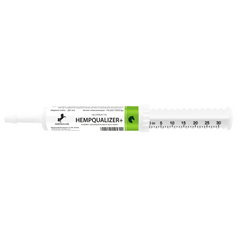Anatomy Leaves No Doubt
A broken leg in a horse isn’t just a serious injury – it’s one of the most difficult and heartbreaking situations a horse owner, veterinarian, and the horse itself can face. Why? The answer lies in the unique anatomy of the equine limbs. Though they appear strong, they are actually delicate and heavily burdened.
1. The Whole Body Weight on Thin Legs
An adult horse weighs between 500–600 kg, and all of that mass is supported by four slender legs. For example, the cannon bone (metacarpal/metatarsal) measures only about 2.5–3 cm in diameter. Trying to bear weight on a fractured limb often leads to severe tissue damage and complications.
2. No Muscles = No Protection
Below the carpal joint (front legs) and hock (hind legs), there are no muscles—only bones, tendons, and ligaments. This means the bones are unprotected and unstabilized. Fractures quickly become open wounds, greatly increasing the risk of infection.
3. Poor Blood Supply and Thin Tissue Coverage
The lower limb tissue is extremely thin. When a bone is damaged, the blood supply can be disrupted, leading to necrosis (sequestrum) that easily becomes infected. Under these conditions, healing is extremely difficult.
4. A Horse Must Stand to Survive
Horses can’t lie down for long. Prolonged recumbency leads to colic, pneumonia, pressure sores, and even rhabdomyolysis (muscle breakdown). After surgery, a horse must quickly return to standing and evenly bear weight. If not, complications arise.
5. Impaired Circulation and Vascular Complications
Equine limbs play an active role in blood circulation—especially venous return to the heart. Movement activates the hoof and muscle pumps, aiding blood and lymph flow. Immobilization from a fracture disrupts this system, causing blood pooling, swelling, and poor microcirculation—all of which hinder healing.
6. Overloading the Healthy Limb = Risk of Laminitis
When one leg is immobilized, the other three must carry the full weight. The opposite limb bears the most stress and is at risk of supporting-limb laminitis—a serious and often fatal complication with up to 50% mortality.
7. The Evolutionary Price of Speed
To run fast, horses evolved lighter lower legs. This design increases speed but comes at the cost of fragility. The thin bone walls have very little margin for error. Even minor trauma can lead to spiral or comminuted fractures.
8. Repair? Extremely Challenging
The bones are thin, and the forces are immense. Screws and plates must withstand up to 150 kg of weight per leg, yet they often loosen, become infected, or fail due to fragment shifting. Successful treatment demands the highest level of surgical skill—and still, success is not guaranteed.
What Do the Statistics Say?
-
Closed, simple fractures below the fetlock joint: over 70% of horses return to work.
-
Open, comminuted fractures or fractures of long bones: only 12–25% survive, even with intensive treatment.
Summary
Equine limbs are the result of precise yet delicate evolution—they are built for speed, not healing. The absence of muscles, thin bones, minimal soft tissue, and the need to stand and move constantly means even a “minor” fracture can be life-threatening.
Modern surgery, 3D implants, and standing anesthesia improve outcomes—but only in simple cases. In severe fractures, euthanasia is still often the most humane decision.






